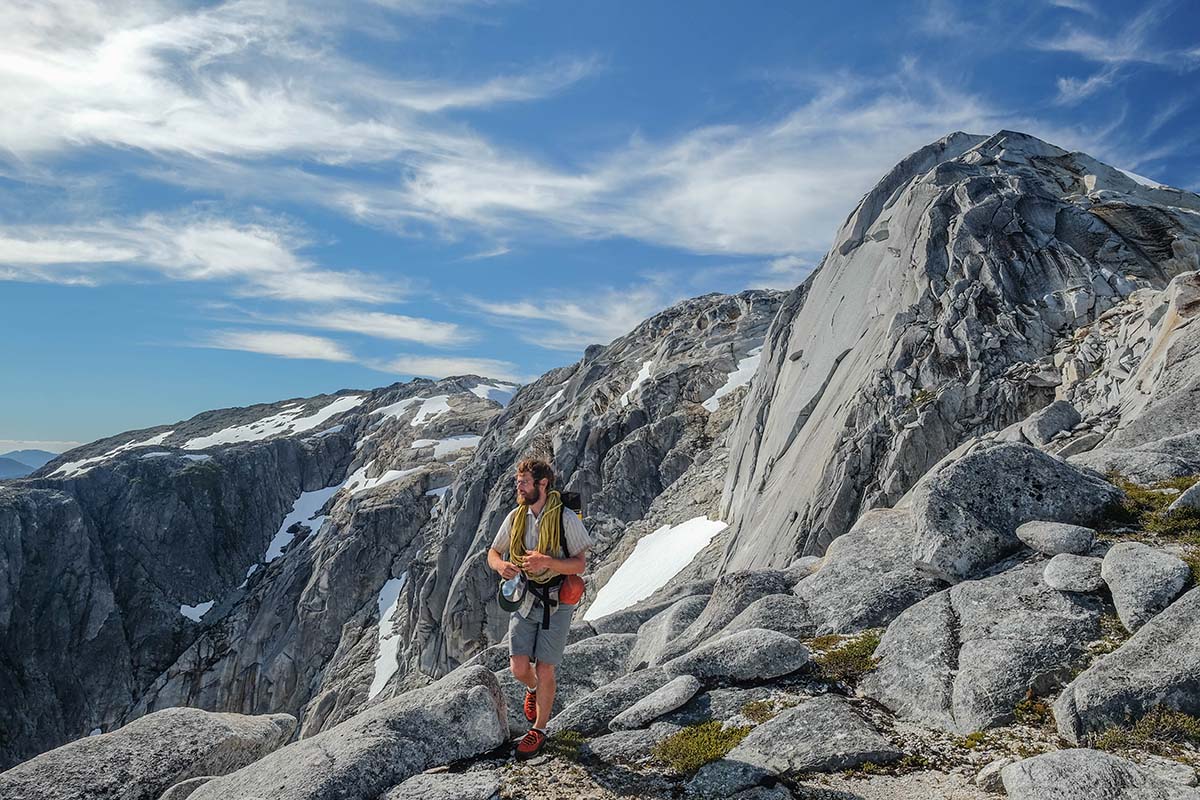
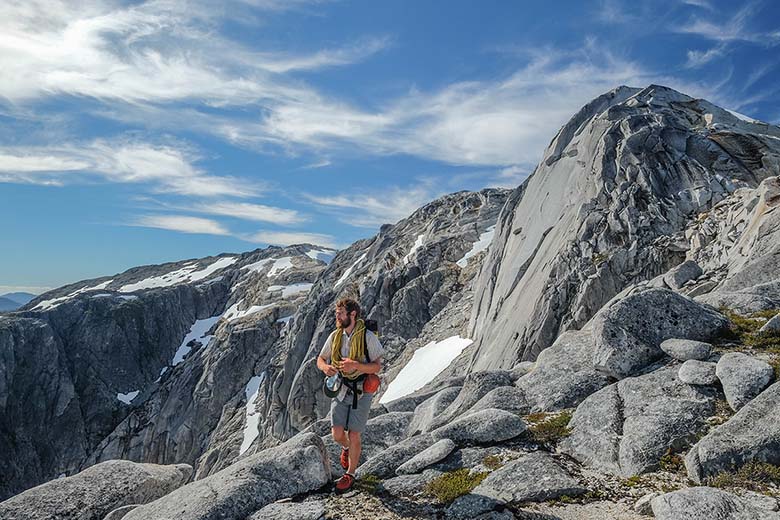
A shadow passes over.
“What was that?!”
“I don’t know. But it was big. Not big. HUGE. And it was close.”
“Did you hear that rush of wind?”
“Yeah… like a parachute opening!”
“But where did it go?”
Megan and I look around, but there is no sign of life beyond ourselves. The summit has got to be just over that rise. Our legs are tired, feet are sore. So much granite sprawls out beneath us into the jungle. I can’t help but smile. God, this place is beautiful. At every single level. Beauty upon beauty, and beauty still within. Almost there. Just a few more steps...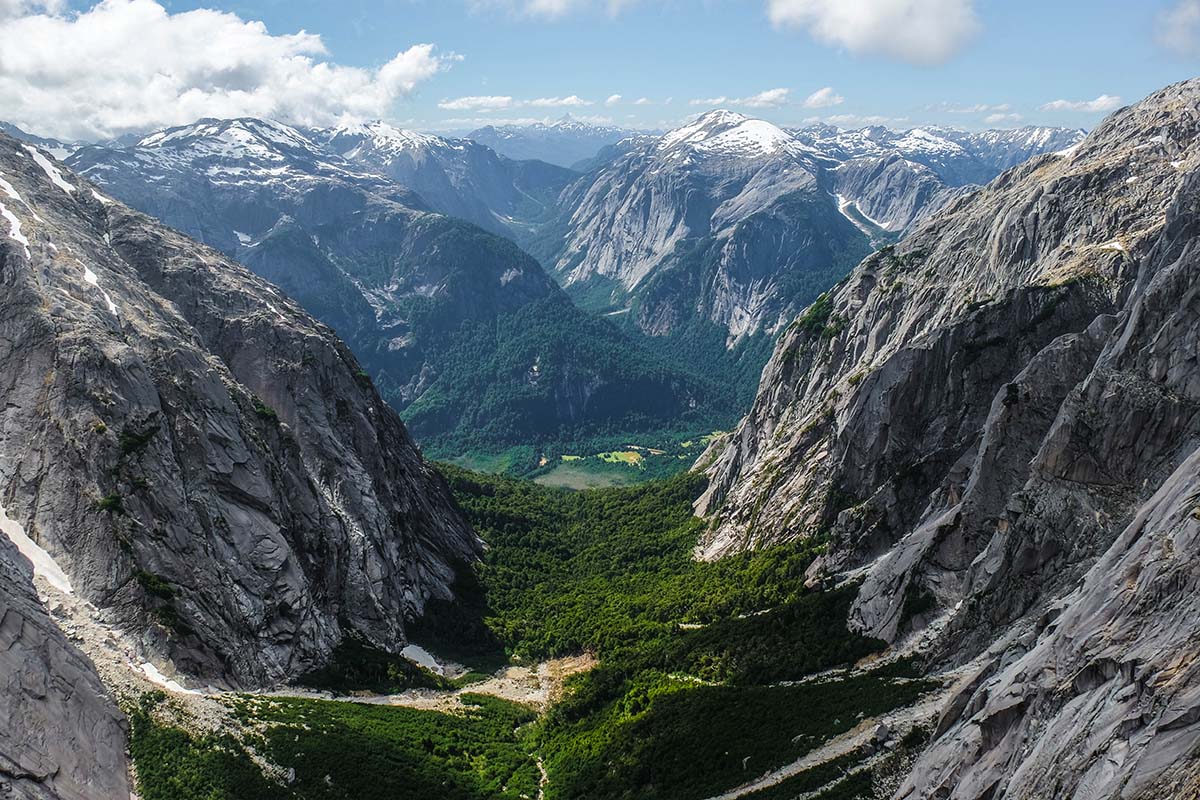
I was a bum.
Twenty-six years old. Missing front tooth. Unemployed. Going nowhere. Addicted to climbing.
Did I want to go to Cochamó, my friend Grant wanted to know.
Sure. What is it?
Just a bunch of rocks in the jungle.
Sold.
That was 2010. And that was approximately how much I knew about Cochamó, which has come to shape my life in many profound and important ways. A lot has changed since then. Both in the valley, and in myself. But before I get too carried away with those tall tales, let me take you there. Let me show you my favorite place in the world.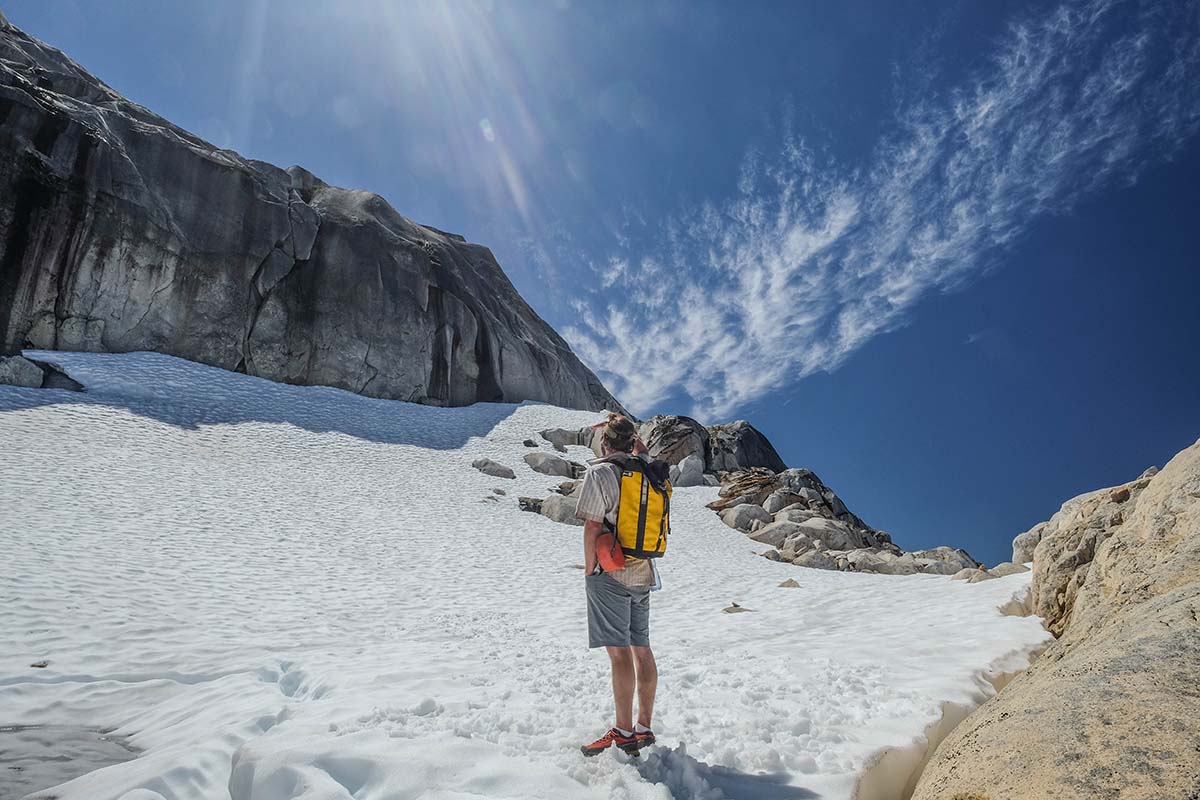
***
Megan steps down into another sucking puddle of mud - this one nearly deep enough to top her muck boot. We exchange knowing glances. Even on a dry day, during a stretch of good weather, the mud here can be knee-deep. Overhead, the trees are sprinkled liberally with epiphytic life. A shock of blue sky parts the canopy. Now we’re in open pampa (grassy pasture), looking upon shining white walls. We’re almost there. Valle Cochamó.
The next few days are the typical Cochamó whirlwind. Set up camp. Retrieve bags of food and gear from the arrieros (horsepackers who carry expedition loads up the twelve-kilometer trail into the valley). Say hello to old friends, check out a favorite tree here, a preferred swimming hole there, you know, the standard fare.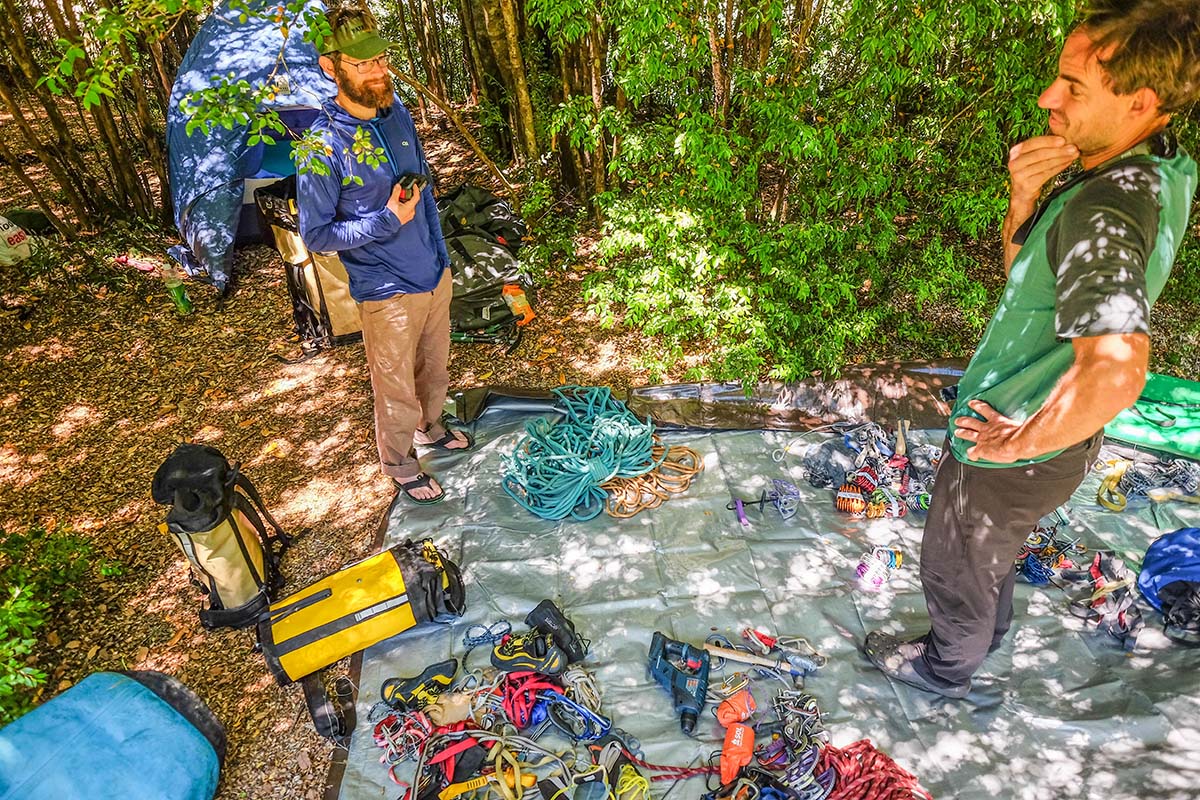
As soon as we’ve got our bearings (and a weather forecast) it’s off on a mission to the towering granite walls above. This time, up to El Anfiteatro to get our climbing legs beneath us again. Meg and I make our way up a couple of moderate slab climbs - feet adhering improbably to featureless plaques of clean granite. Learning to dance again. Taking in the views. Trusting the shoes. We bring food and supplies for three days in the high valley, tent-free, bivying beneath an enormous boulder. When the food runs out, it’s back down to La Junta. We take the knee-pounding descent in stride, calling it a rest day. Tomorrow we’ll pack for the next mission, and head out again.
We find ourselves back in El Anfi - this time with Chance, a friend from a past trip here. We’ve got our sights set on Walwalun, where we hope to open a new route. Days are spent in logistical tedium. Lugging ropes and gear to the base, getting established on the wall. We make a false start in the form of a 16-hour day up the right side of the lower apro. A wave of granite 1,500 feet tall crests beneath us as the sun sets out of sight over the Estero Reloncavi. We find our way down in darkness, Meg and I hugging at the belays for warmth. It’s the last climb of the trip that I’ll forget to bring a jacket.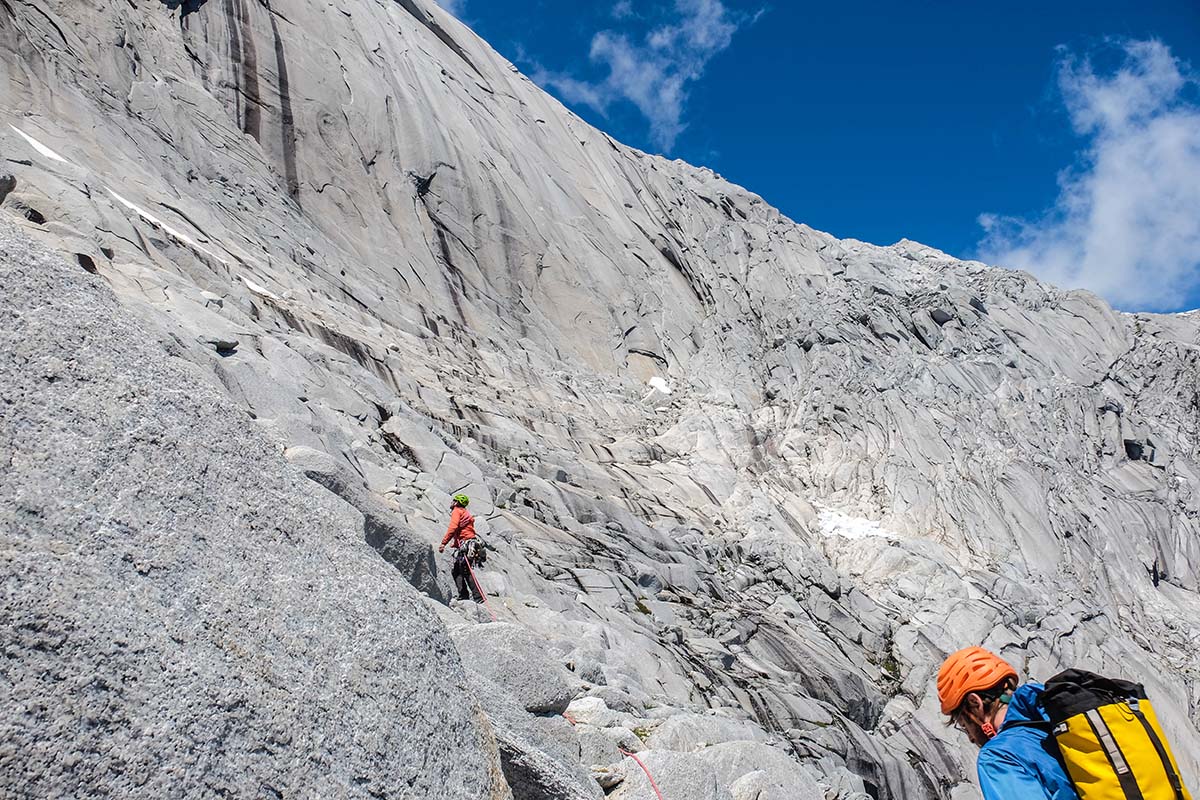
A day passes and we’re back on the wall. This time, on virgin terrain. Chance’s hammer blows land with an unconvincingly low “bong” on a small piton. Not the ping, ping, ping I was hoping for. Watch me, he calls. This one might not hold. Carefully, he inches his way further right. Steady, steady, pop! He’s not so much flying as skidding down the slab - arms extended over his head, legs straight, like he’s going face forward, feet first, down a very steep waterslide. Another piece pops, and finally his fall is arrested by a solid cam. He grins over at Meg and I - almost at the same height as us now. “That was a good one!” And soon, he’s off again.
I follow Chance out the arcing roof, cleaning his gear and trying my best to free climb the moves. The problem is not so much the difficulty (mid 5.12), but the wetness. This isn’t a crack, just a seeping slab. I traverse a final heady runout to join him at a stance in the middle of the wall. Above us steep, wet stemming looms. Sometimes these things happen. Some lines are better left unclimbed. We leave without our quarry. A project for a drier year, perhaps - or just a dead-end nobody will ever return to again. Only time will tell.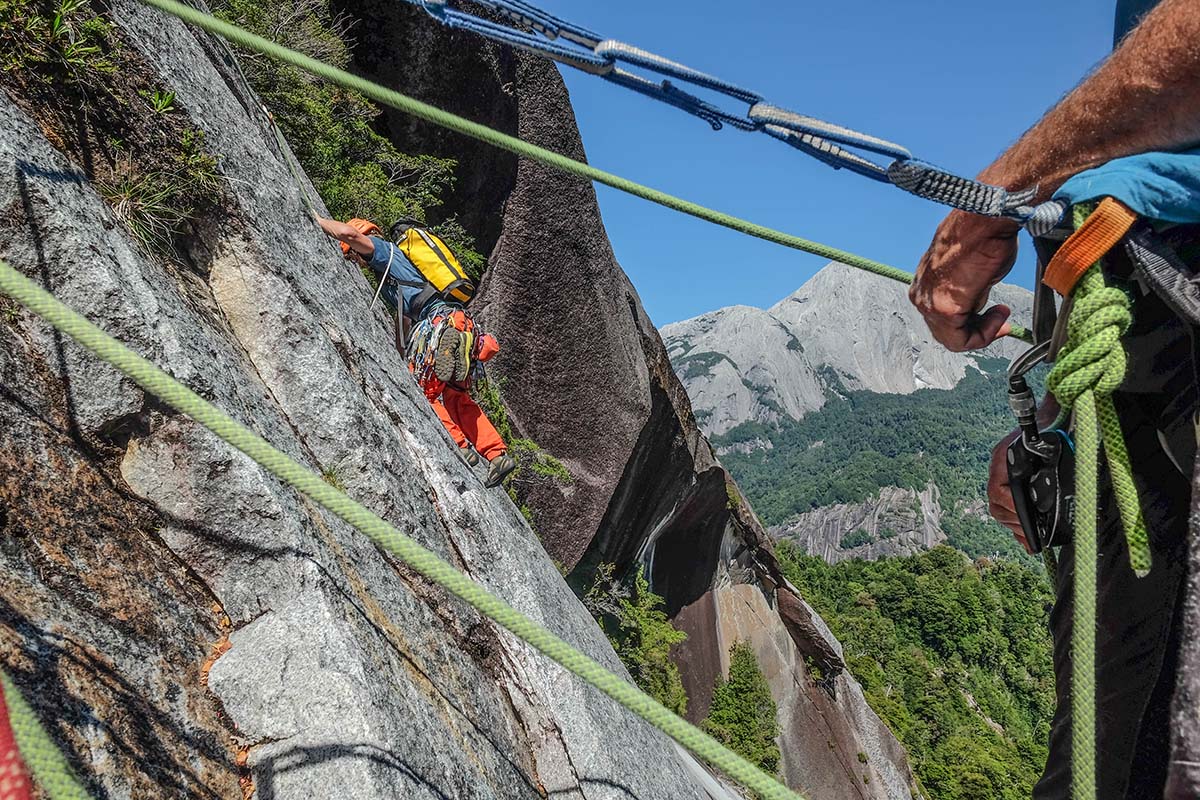
Megan is jonesing when we get back to the bivy boulder for a change of pace. Too much time in jugs and aiders, clinging to the sides of mountains. Trinidad Valley beckons with its beautiful pools, secret campsites, and “I’ll Never Tell” attractions. There are things we won’t put into words - not here, not anywhere. But Megan mouths them silently to me. It’s time to switch gears.
This is typical Cochamó fare, and I’m prepared for it. Things don’t always go according to plan, and new routes always take longer than you think they will. Not all things that appear to be cracks actually are. Sometimes, you’ve got to cash out, and move on.
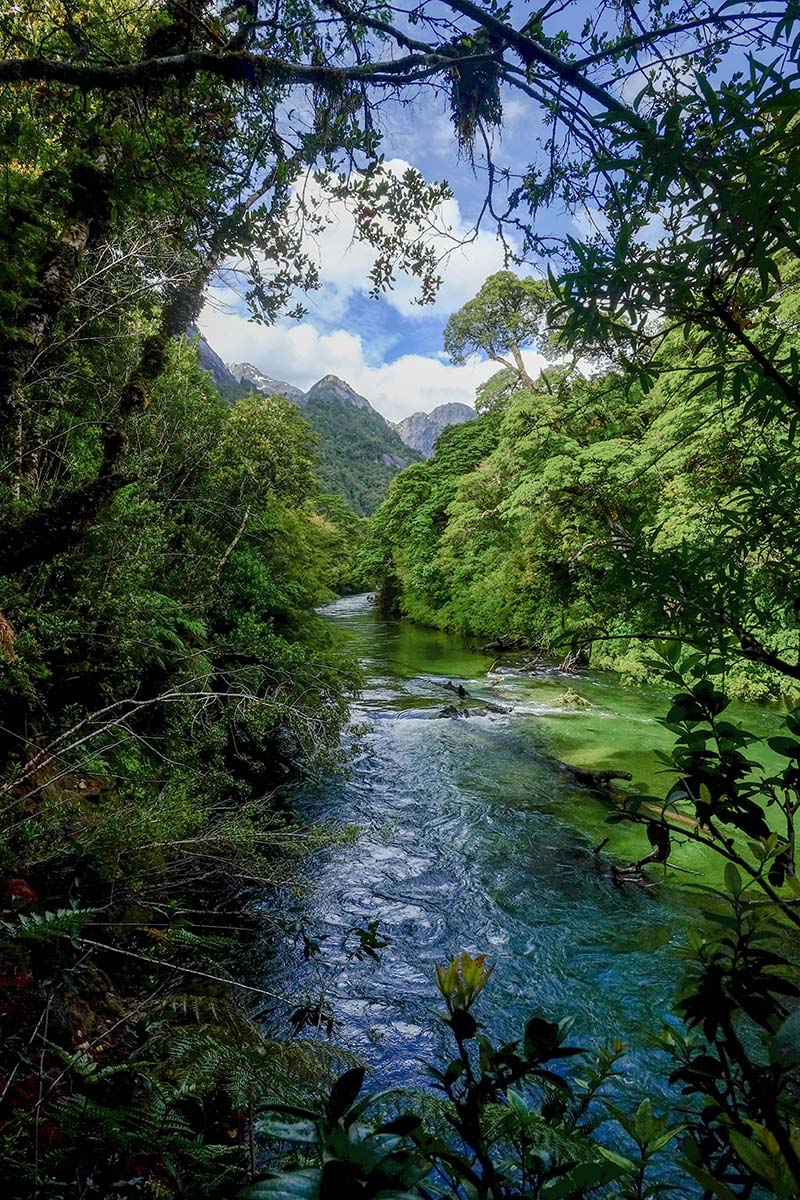
But it’s all good, because in Cochamó - more than any other climbing location I’ve ever been to - it just doesn’t matter if you’re climbing or not. Even the hiking is technical, and wild enough that I rarely feel like I’m missing out on an adventure. And the sitting - oh, the sitting is swell. From your basecamp in La Junta - the bucolic paradise through which the Cochamó River runs, 12km from the nearest road - you can pass days and days of pleasant vacation simply watching birds. Don’t worry - no bird book or binocs needed. You get to know them pretty quickly, they hang around so. Cometocino is the friendly yellow-breasted one that likes to kick around camp begging for scraps. When the ulmo starts to bud the Austral Parakeet swoops about in garrulous flocks, adding yet another hue of green to the already excessively verdant backdrop. The Caracara, in flight, is a stunning raptor; but it, too, malingers about the pampacasually, wobbling like a maladroit chicken. You could stay here for weeks, months, years, simply watching the birds. Scanning the skies for condors. And that, my friend, would be lovely.
Or you can explore. The Río Cochamó cuts a long valley roughly east to west. Budding off of this valley, both north and south, are deeply carved cirques and bowls of enormous granite walls and snow-capped peaks. They’re all magnificent - take your pick. Of the more developed trails (developed, of course, being a far cry from your average hiking trail back home), the Mirador de Arco Iris, may be the most popular. Five hours of steep uphill clambering through dense forest and cliffside alercegroves (think Giant Sequoia) bring you up to a broad plateau of granite bedrock, and finally to a viewpoint from which you can see the Reloncavi fjord and a smattering of peaks (some named, some not; some climbed, some not) and volcanoes, stretching all the way into Argentina, and the spine of the Cordillera Andino. Not a bad spot to catch a sunset (and, if you’re up for it, a sunrise). And did I mention the stars are so luminous, so multitudinous, that the whole milky sky appears to glow, even when the moon is nowhere in sight?
Arco Iris is but one of many trails, and we hiked it this year (just as we do every year). Up near the summit, in a special little cleft of the mountain where few people go, Megan removes a very small nalgene container - only a few ounces in size - from her pack. She carries it everywhere. She pours some of its white powdery contents into her hand, and takes a long look around at an endless panorama of pristine wilderness. When the wind picks up a little, she throws the ash up into the air. There he goes - a little part of Kevin Kelly, Megan’s father - up into the sky to join the condors sailing not far away.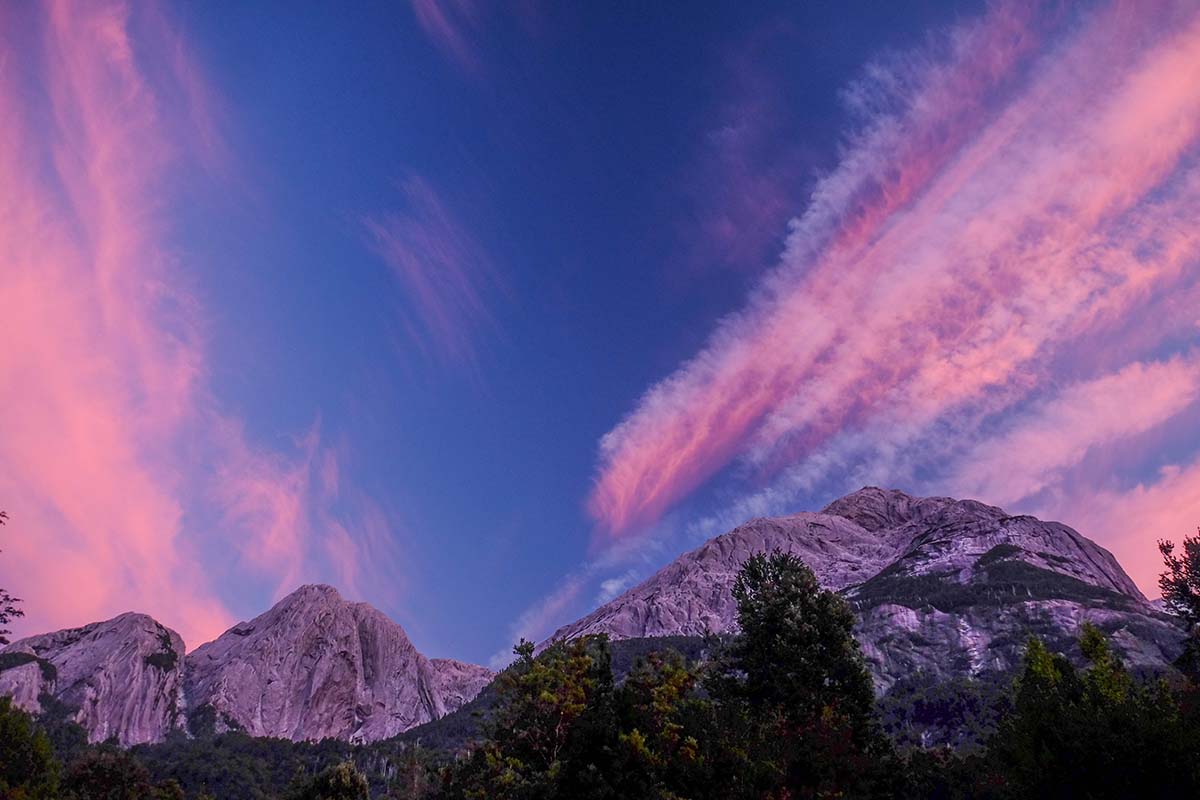
When he joined us here in 2012, Kevin was a grown man, but he looked more like a kid in a candy shop. Every river bend, every step in the trail, every tree, bed of moss, clutch of lichen was a thing to be explored. A true conservationist, Kevin instilled in Megan a desire - no, not so much a desire as a need, a soulful longing - to bear witness to wild places. This is what we are here for. To follow in Kevin’s footsteps, but also to take him where he never had the opportunity to go.
Throughout the following days, climbing motivations fade far into the background as we turn our attention to this latter task. And it’s during this prolonged memorial that we find ourselves one afternoon, high above the Trinidad Valley. We are cresting toward the summit of some unnamed (though certainly not unclimbed) peak, when an enormous winged creature swoops quite near enough to knock our hats off. All we catch is the shadow - by the time we look up, and around, the thing is gone. A few more steps, and Meg freezes stock still. I do the same. She beckons me up, slowly, quietly.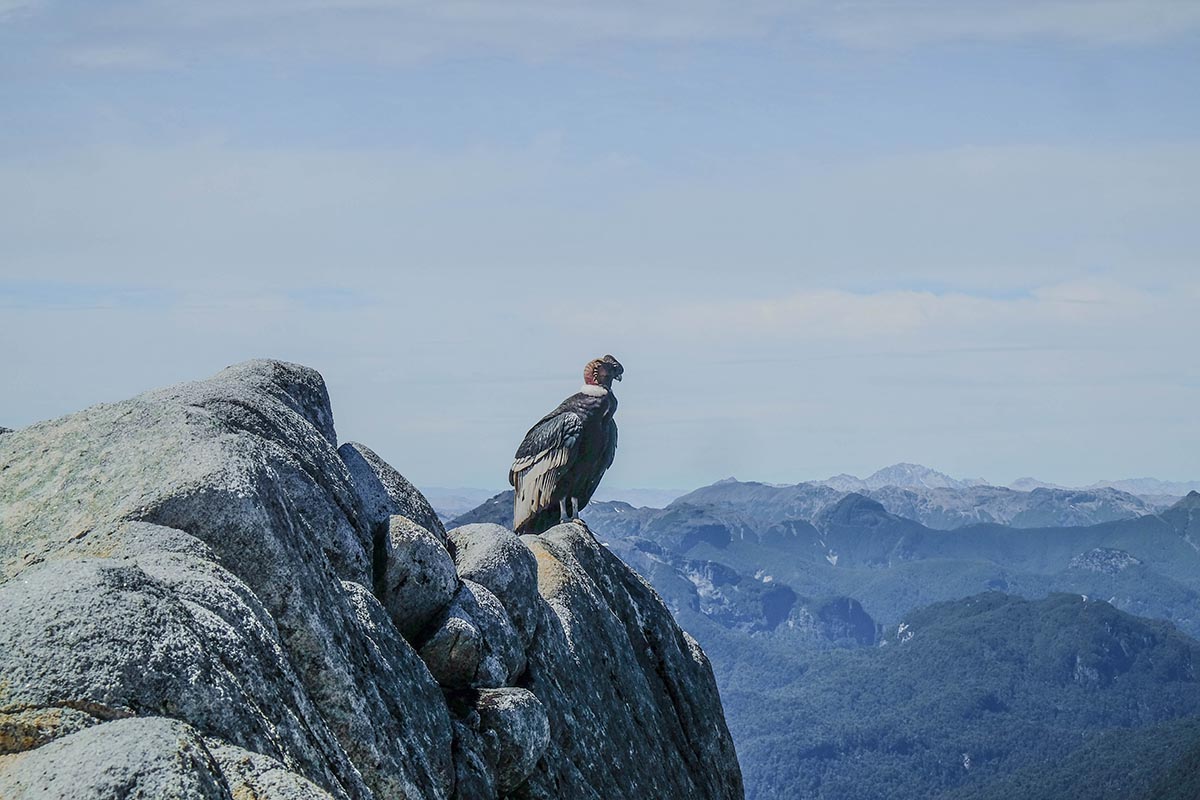
There, not ten yards away, is a pointy little summit block. And on top of it, perched like a gargoyle on the parapet of some medieval castle, stands an enormous condor. He stares at us. Quizzically? Indifferently? It’s hard to say. He turns his head from side to side, his left eye fixed upon us, then the right. He spreads his enormous wingspan, as if to remind us how huge he is. We take some obligatory photos, feeling instantly ashamed of being so damn predictably human in this special moment. Then the phones and cameras drop, and still he stands.
Suddenly there is a great whooshing of wind, and an enormous shadow passes over us. This one - a female - lands on a promontory about fifteen yards away. It too looks at us. Unperturbed, unconcerned. Meg and I move around slowly at first, tentatively. But these avian marvels show no sign of fear, and soon our movements take on a near irreverence. We dare to switch lenses, to don a jacket, to sip water. The condors couldn’t care less.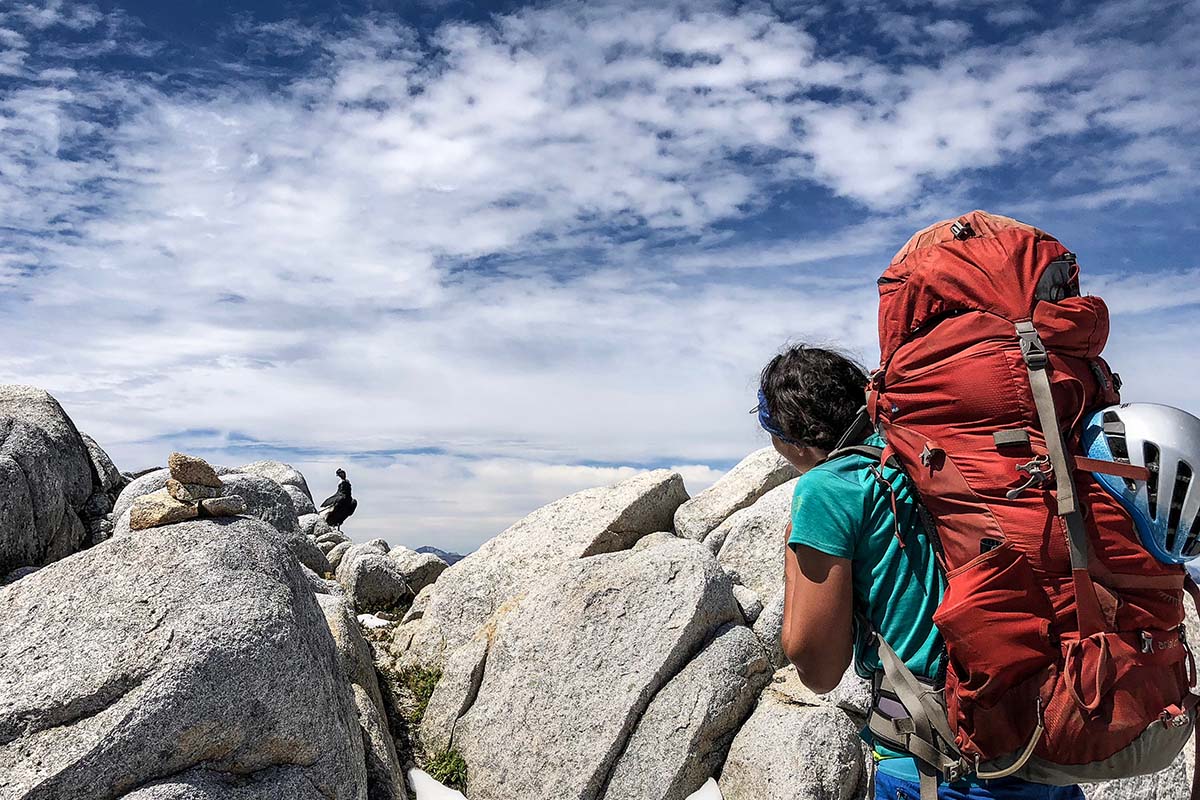
As if the current gathering isn’t enough, two more condors come sailing in from parts unknown. They don’t land, but circle us - sometimes at arm’s length. For Meg, who has envisioned her father in avian form ever since his bodily departure, this is not so much a sign as a gobsmacking injunction from the universe. Thou shalt not leave this spot without scattering some ashes. And so she reaches for the bottle.
By the time Meg is ready, our perched friends have joined their soaring brethren. I spin circles atop the pointy peak, dizzily succumbing to the great gyre of beauty. There’s Tronador, with a large male cruising above. Now a pair cuts a black line through the sky above Frey, far off in the distance. The silhouette of a lone seraph hovers momentarily above El Monstruo, then disappears into the shadow of Cerro Laguna. From here I can see nothing short of thousands of peaks, valleys, lakes, forests, trees, walls, lagunas, rivers, and glaciers to explore. And there goes Kevin, floating like spindrift into the sky, disappearing into so much perfection.
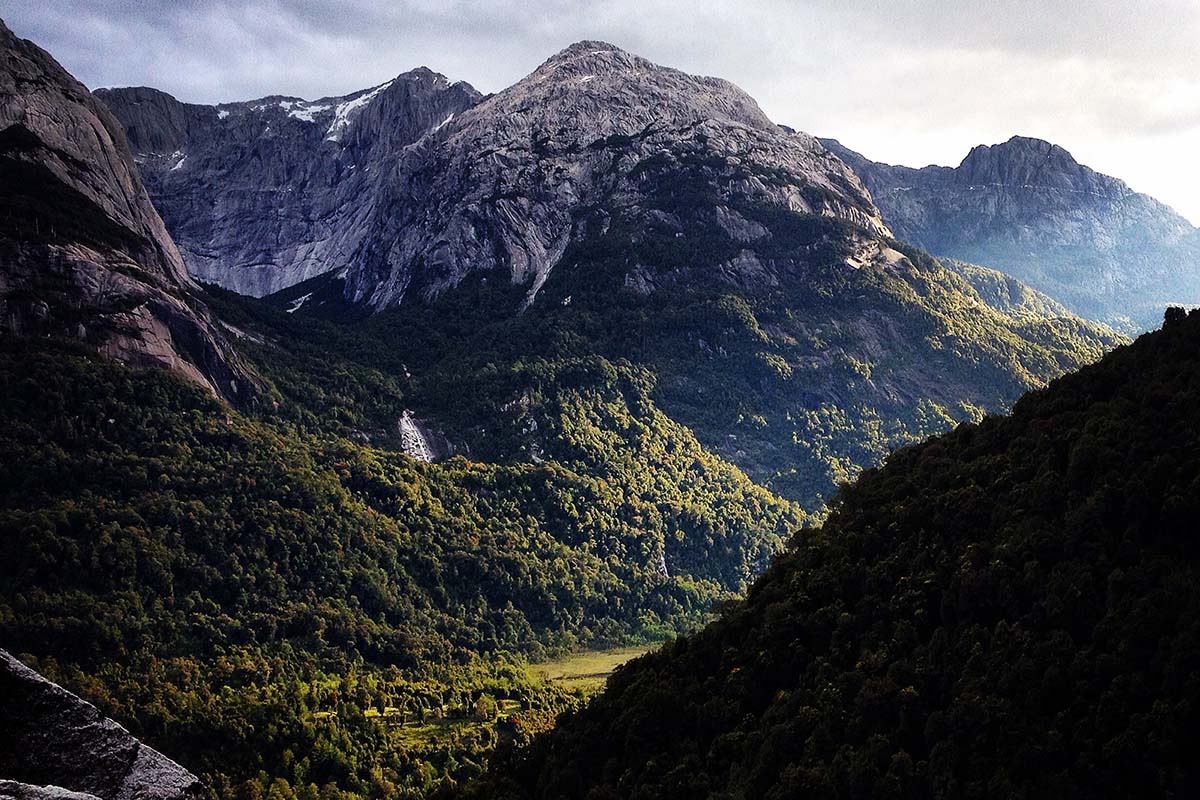
Shortly after Kevin’s departure, Megan makes her return to the United States. For me, it is back to new routing dreams. Alone, I make my way up a wall. Pitch after pitch, I self-belay, climbing up vegetated cracks and vertical faces. Each pitch I lead, I must then rappel, clean the gear, and then climb again to return to my high point. It is exhausting work, and by the time I’ve made it roughly 1,000 feet up the wall, night has fallen. I’m two pitches shy of the summit when I turn in to catch a fitful rest on a miraculously flat ledge. It makes a comfortable bed for one. Two would be one too many. I send Meg a message on the inReach to let her know my status, and inquire about weather. She confirms the worst: rain early morning. I set my alarm for 5am, prime time for a predawn retreat. Rain starts to fall just as I hit terra firma.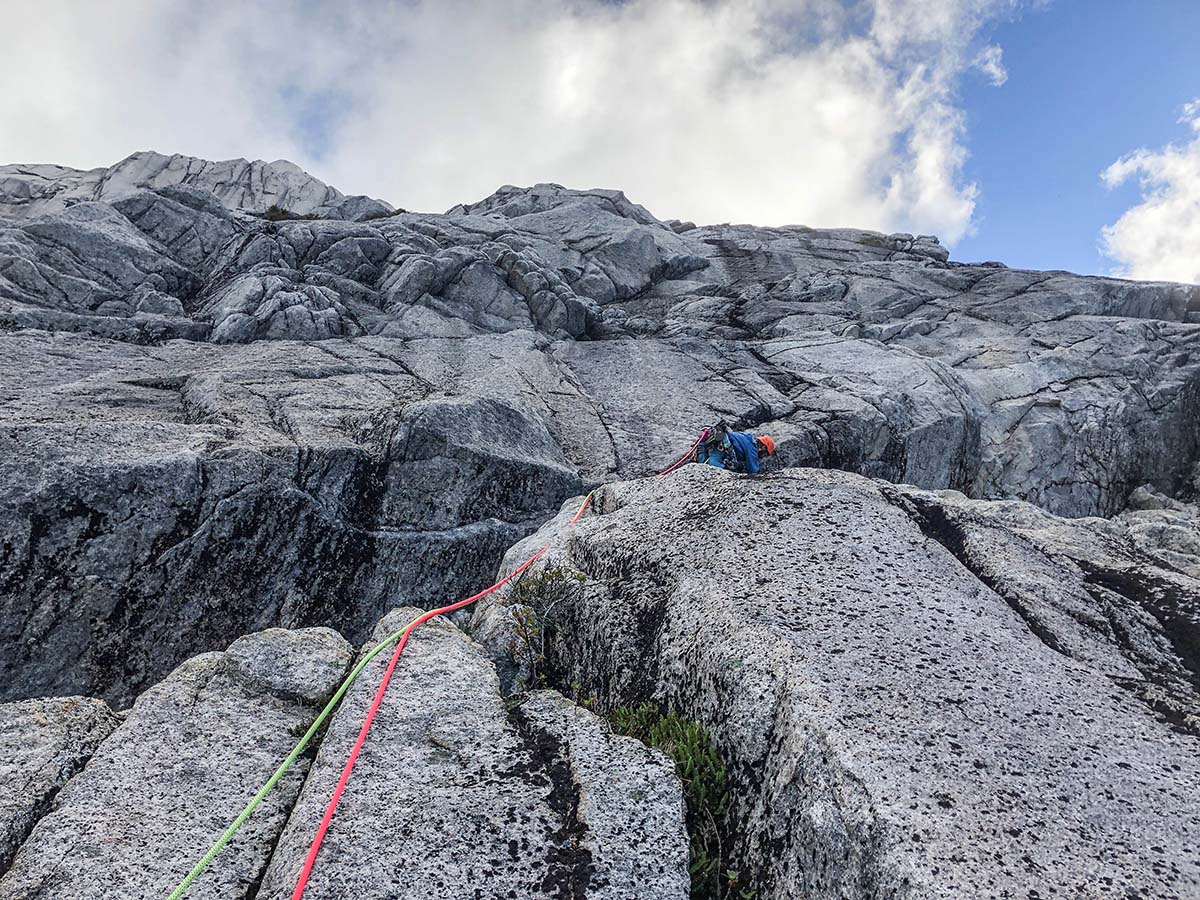
One last attempt. Time running out. We’re four pitches up. Kirk takes the rack, and ventures up into vegetation. Suddenly he’s sailing through the air. By the time I realize he’s falling, he’s already hanging beneath me, groaning. He’s not okay. The ankle is swollen up like a grapefruit in minutes. There’s no discussion, no debate. We go down.
Am I frustrated that my season will end this way? Part of me feels like I should be. I spent two months there, and not a single new route to show for it. My first season in six in which that is the case. Ordinarily, I would be bummed. But as Kirk and I descend to the base, I’m happy as a clam. The sun is shining. My favorite lizards greet us at the base of the wall. There are friends to help us back at the bivy boulder. Kirk is alive and well. I am alive and well. Megan is alive and well, and waiting for me with our dog back home. And Cochamó, for the time being, is alive and well. It is still paradise. It is still all that I can dream. And for now, that’s good enough for me.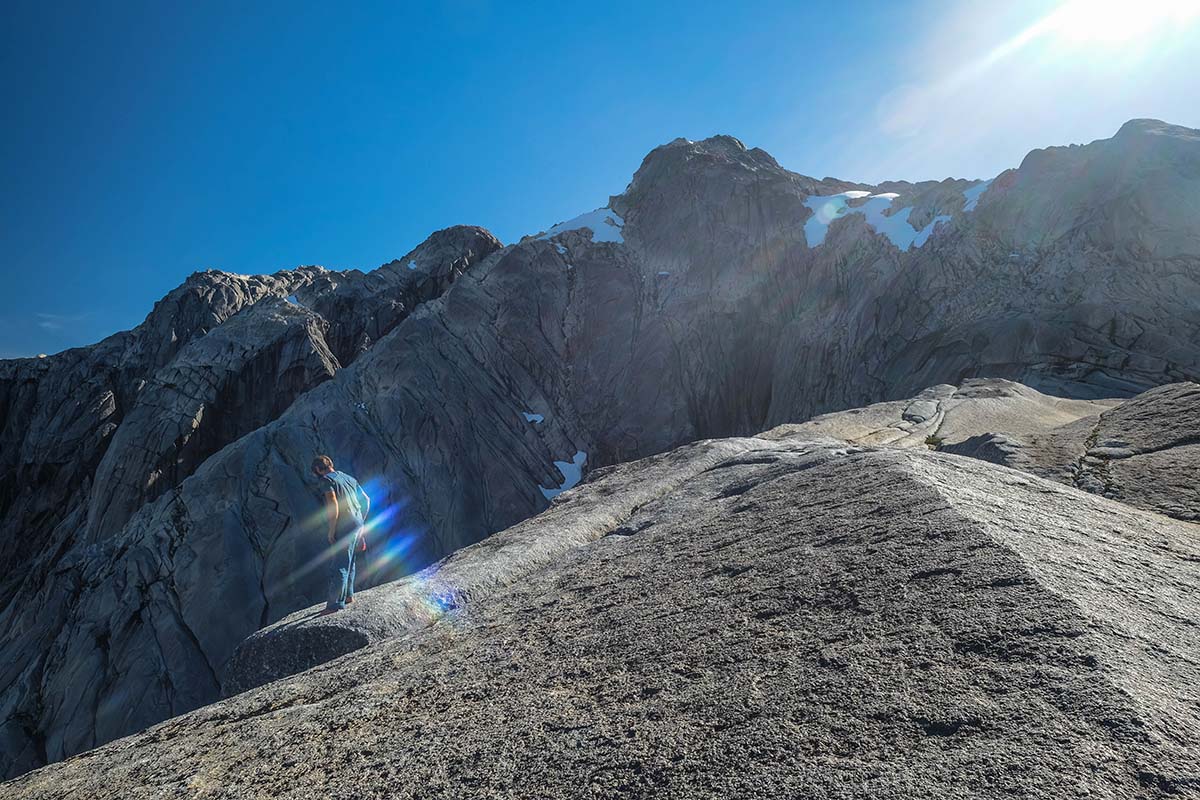
When I first visited Cochamó in 2011, there were two campgrounds in La Junta Valley. One of them was poorly attended. The other was occupied by a total of probably 100 or so different guests during the entire month I stayed there. I met, talked to, and drank mate with nearly everyone.
In 2018, just seven years later, there are five “official” campgrounds in the valley; all of which host, during the high season, 100-200 people on any given day. Add to that all the illegal campers squatting in the high valleys or further up-river, and you can count on there being 1,000-1,500 people in the Cochamó valley every day during the month of February.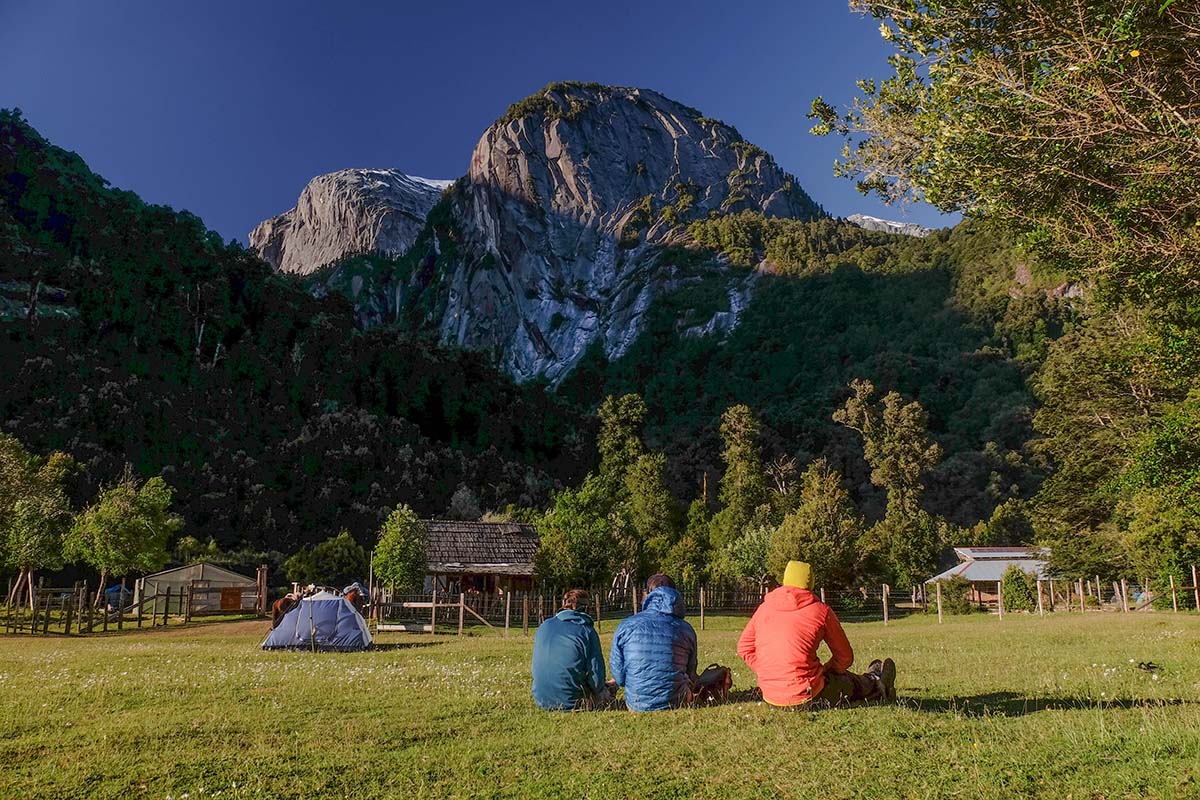
Compared to something like Yosemite Valley, this doesn’t seem like a lot. But Cochamó is not Yosemite. The toilets are at best dry-composting toilets, at medium large pits in the ground, and at worst (in the illegal squatter camps) non-existent. The water you drink is untreated, and, for now, it still doesn’t need to be. But the forest floor is blooming more and more these days with toilet paper flowers. Because the land is a mixture of private parcels and completely devoid of any kind of governmental oversight or regulation, there is no authority to enforce local rules and norms beyond the simple good will of the people camping there.
The problem, in a nutshell, is this: Cochamó is spectacular. Any sane human should want to visit. The fragile area can’t possibly accommodate all who wish to come. The reservation system, and campground hosts, are essentially a dam holding back a human flood. But the flood is growing, and the dam can only hold so much.
So why in God’s name am I writing about it?
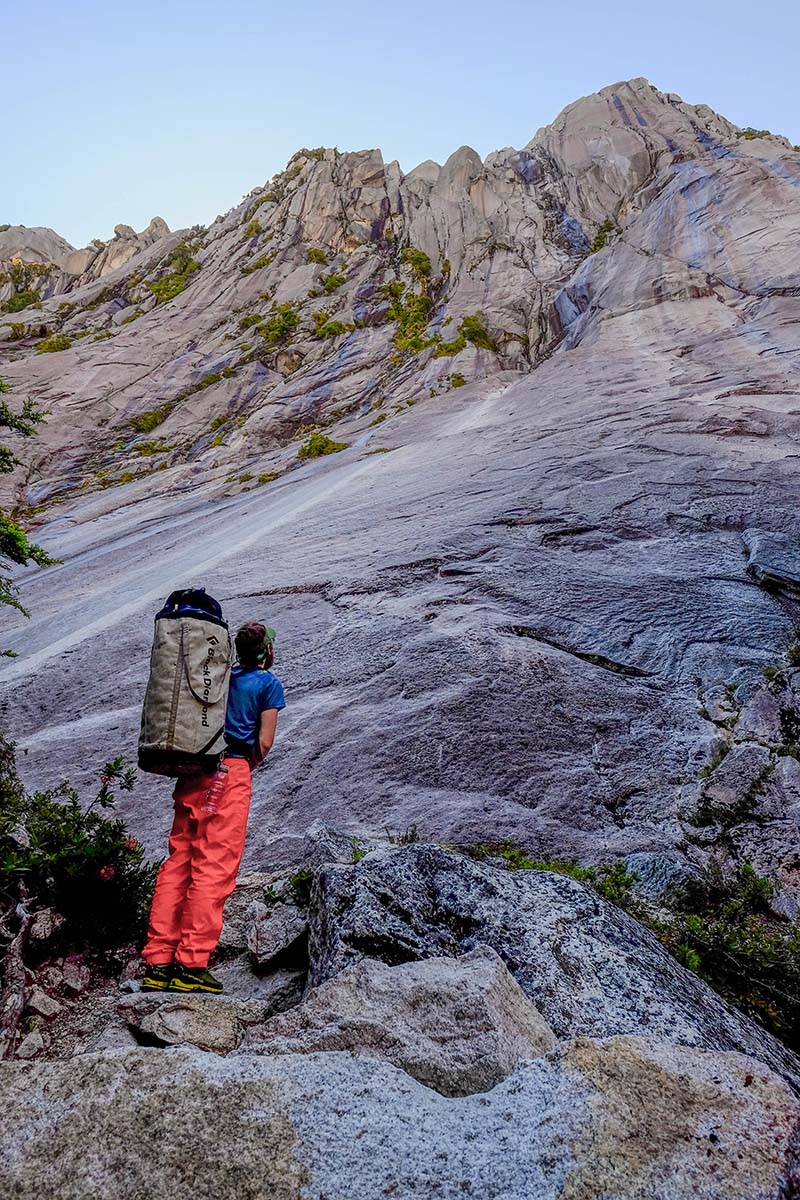
I ask myself this question all the time. Unfortunately, overuse is not the only threat to the region. There have been efforts in the past to dam the Río Cochamó and the next river south - the Río Manso. Other efforts have been made to replace the twelve-kilometer trail into La Junta Valley with a road - which would have catastrophic results for the valley and the entire Cochamó river watershed. These calamities have been avoided thus far, but the pressure from at least one wealthy investor to turn a profit off of Cochamó is growing yearly. Capitalism and conservation rarely coincide. Actually, they tend to run in opposite directions - not that they have to. In fact, if there’s any exception, the current businesses operating in Cochamó are precisely that. Each year, they sacrifice earnings and profits, time and energy, to make the footprint of their businesses as sustainable as possible.
What will the future bring for Cochamó? Helicopter tourism à la Kauai or Havasu? A private park? A National Park that can support as many people as Yosemite? A mine? Believe it or not, mining rights are being purchased throughout the entire region at breakneck speeds by the largest landowner in the area, who also happens to be the owner of a hydro-electric dam company named Mediterraneo. Only in the past few months, this company had their hydro project on the Río Manso shut down by Chile’s Supreme Court for failing an environmental impact study. All of this is ominous, to say the least.
I write about Cochamó in the hope of educating people who want to travel there. It is a special place, but it is a place at risk. It is not far-fetched to imagine that one day in the not so distant future, the only thing protecting Cochamó from irrevocable changes will be an international grassroots effort to simply let Cochamó be. To keep it as it is. As it has been for millions of years.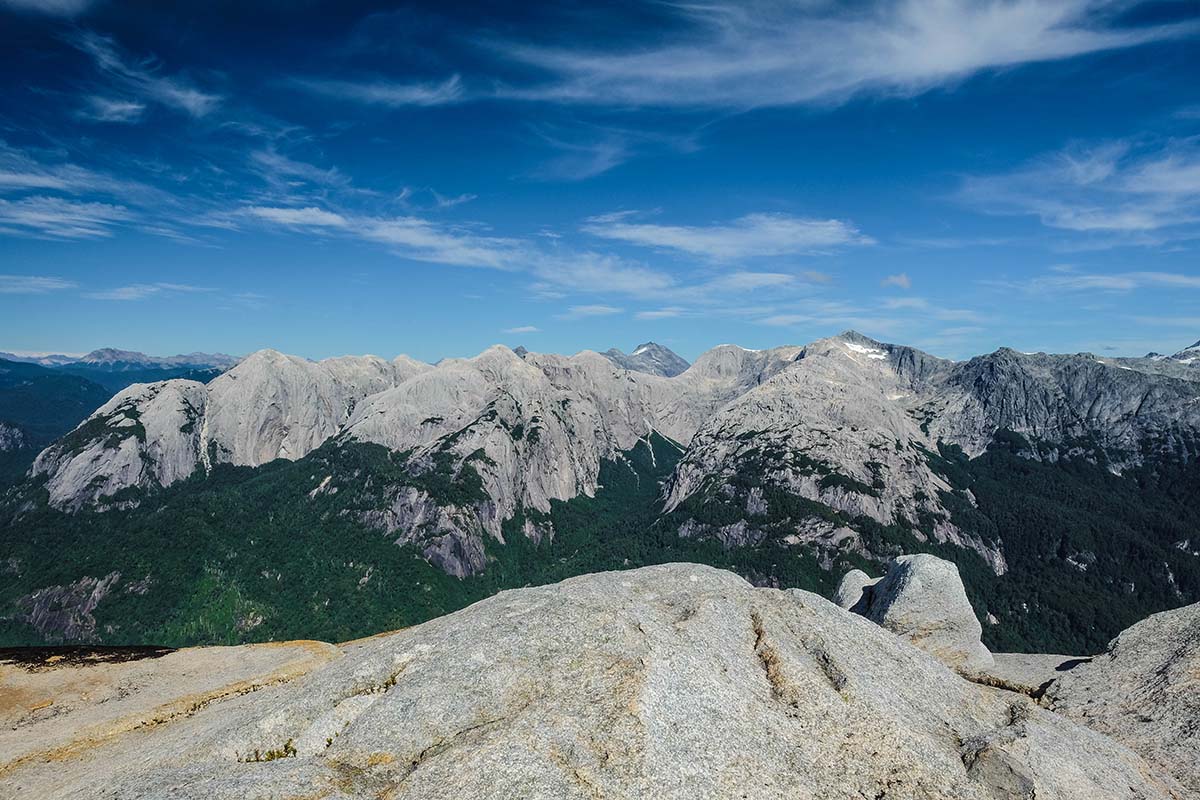
It’s not Cochamó that needs to change. The alerce grows tall and proud, the condors soar confidently over vast wilderness, the rivers and streams are healthy, the air is clean enough to support the largest diversity of moss and lichen I have ever seen in one place. Cochamó, left to itself, will be fine.
We are the ones who must change. And we must change our notion of what dominion we ought or ought not to have over places like Cochamó. It is not ours to do anything with at all. Our respect is imperative, vital, even if it means that folks who have been visiting for nearly a decade and think of it as a home (like me) have to wait in line for a turn to visit like the rest of the world.
Spending time in Cochamó, of course, is not a right but a privilege. If you find yourself down there, I hope you will think of it in that light. Think of how lucky you are to be there, to see such a magnificent place. And do what you can to leave it even better, cleaner, and less impacted by human presence than you found it. That is… has to be… the future of Cochamó. Anything else would just be too tragic.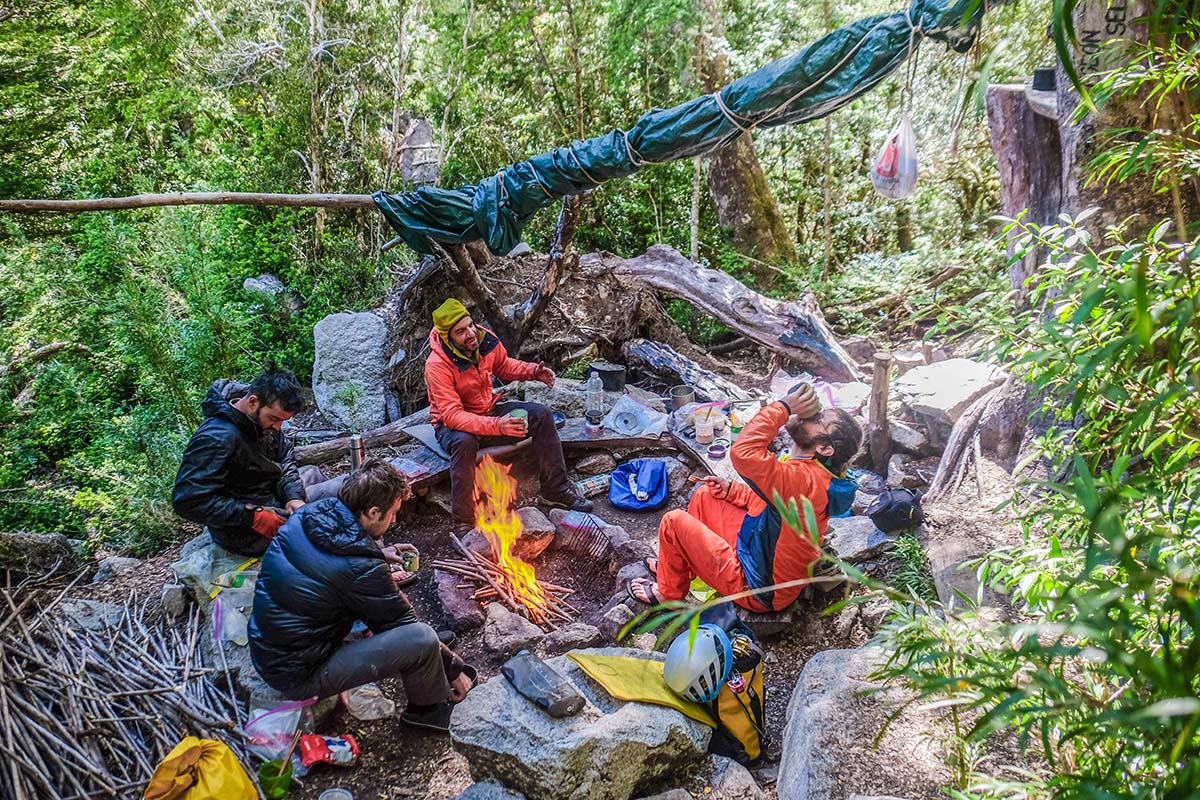
Cochamó is located in Chile, about 1,000km south of Santiago. The most expedient way to get to Cochamó is to fly to Puerto Montt from Santiago, or a variety of other Chilean airports (there are no international flights that land in Puerto Montt). You can also bus to Puerto Montt (or nearby Puerto Varas) from any number of locations in Chile, and a few spots (such as Bariloche) in Argentina.
From Puerto Montt, or Varas, there is a bus that takes you to Cochamó town, or to the end of the road. The schedule varies season by season, and your best bet is to inquire in the Puerto Montt bus terminal. In the past, the bus dropped passengers directly at the end of the road, where the trailhead is. Sometimes, however, it only drops you at the start of the dirt road, and you have to walk a few extra kilometers to the trailhead. 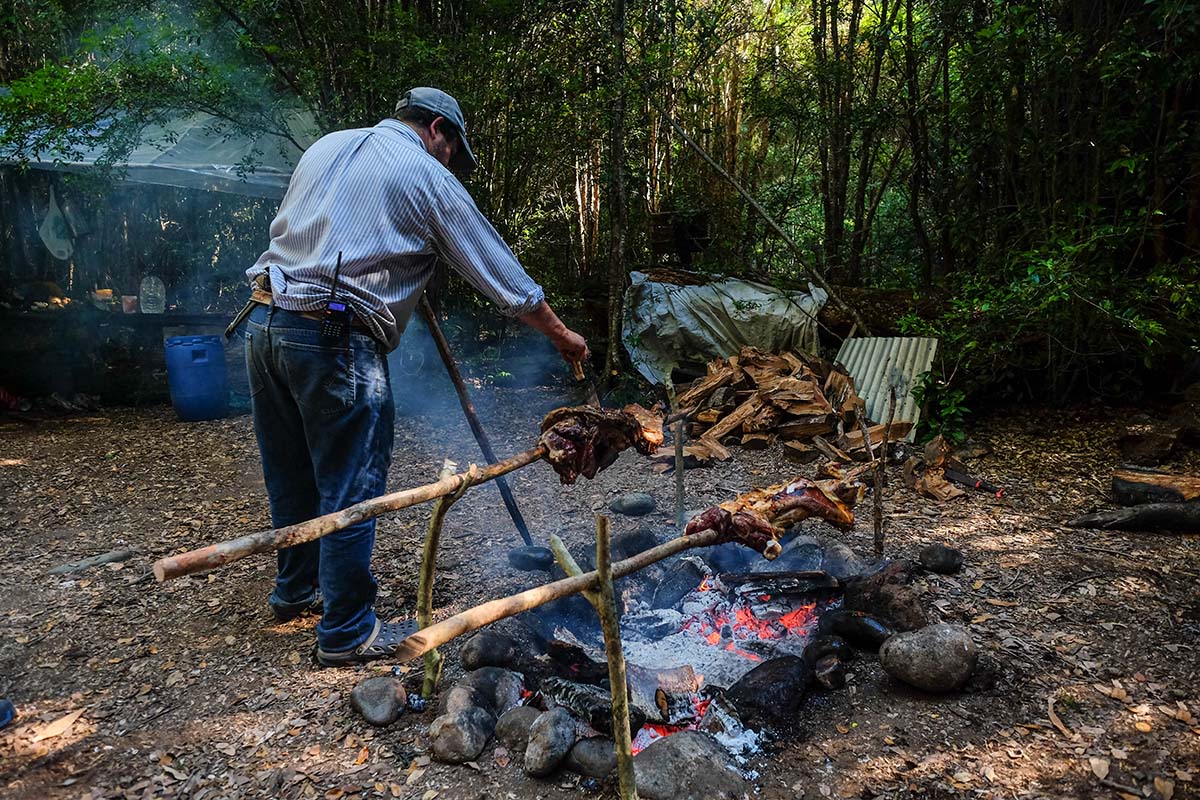
Personally, I would recommend getting off the bus in the town of Cochamó, and spending a day or two there. The scenery is beautiful; there are quaint, tasty restaurants to eat at; the lodging can be quite comfortable. The grocery shopping is limited, but good enough. Dollars spent in Cochamó town likely have a positive impact on protecting the resource, as the town and the valley are intimately connected. Spending your money in the touristy Puerto Varas, on the other hand, does little to help the area.
You must make reservations ahead of time if you want to stay in the Cochamó valley. All of the campgrounds are recommendable, and each has a different feel to it, with unique settings and views. Reservations can be made here.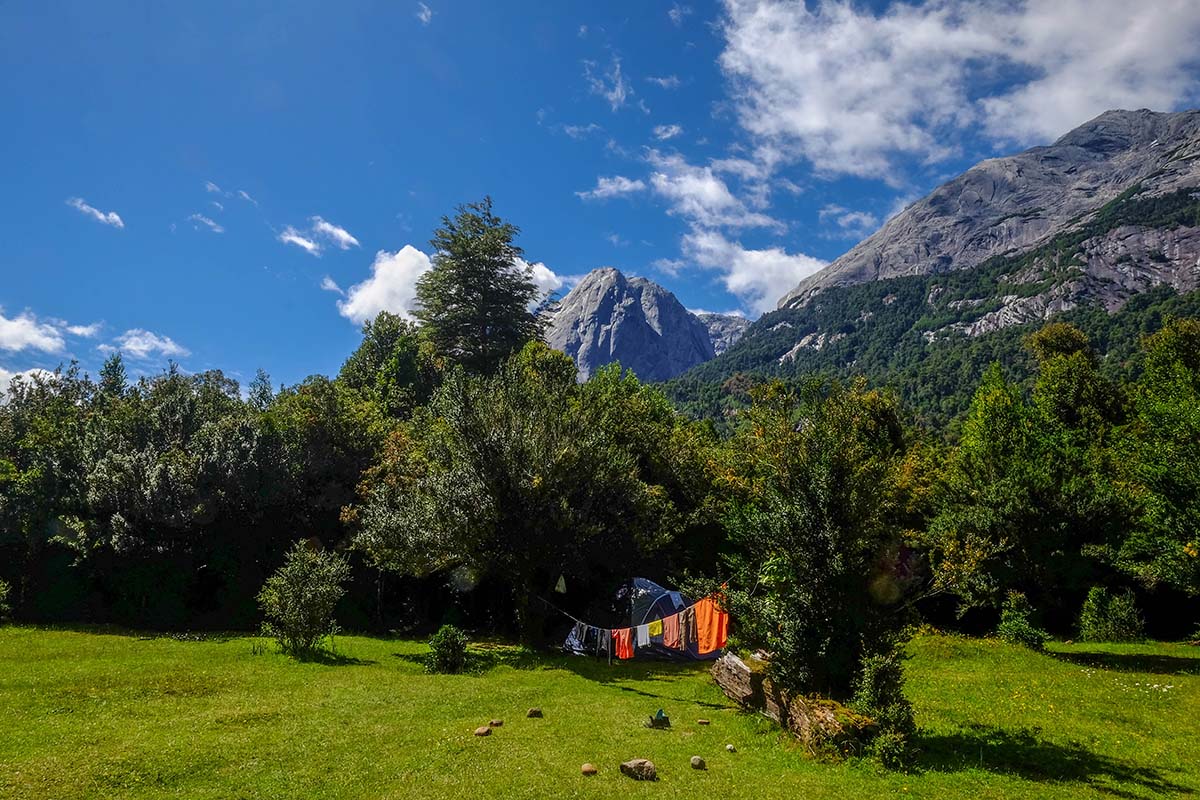
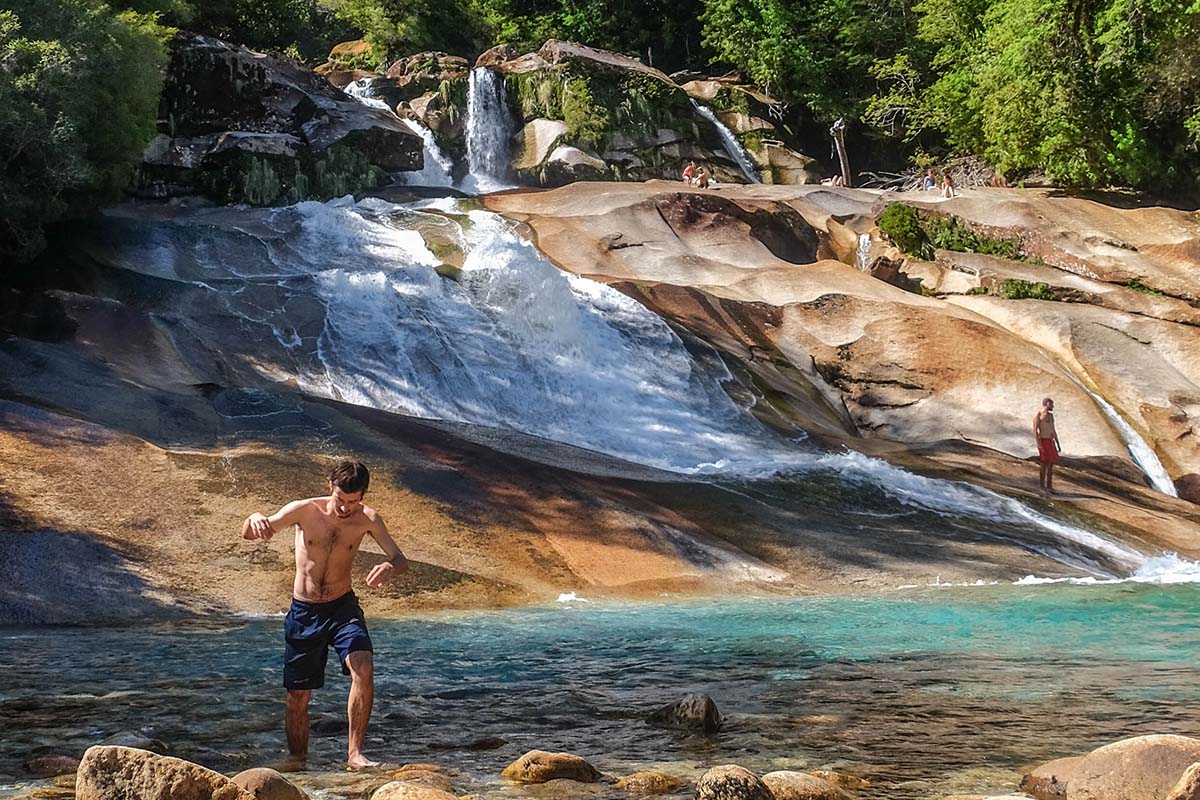
Whether you ride a horse into the valley or walk, Cochamó is not a place for beginner hikers. But, you’d be amazed at some of the people (the very young, very old, and very out of shape) who make it up to La Junta and have an excellent time. It’s not for me or anyone else to say whether or not you can make it - only you can decide. Just know that the trip is arduous, whether by hoof or by foot. But the reward, as they say down south, vale la pena (is worth the pain).
Rain boots.
No, seriously, invest in a pair of rain boots. Cochamó is wet and the trail into La Junta is incredibly muddy (even if it has been dry). You’ll also want approach shoes for some of the more technical hikes, as routes can often cross over granite slabs. Bring rain gear, sun bathing gear, and warm clothes. Temperatures can go from 90 to 30 degrees in the same day. You will be hot, and you will be cold, at some time during your trip. And you’ll almost certainly be wet.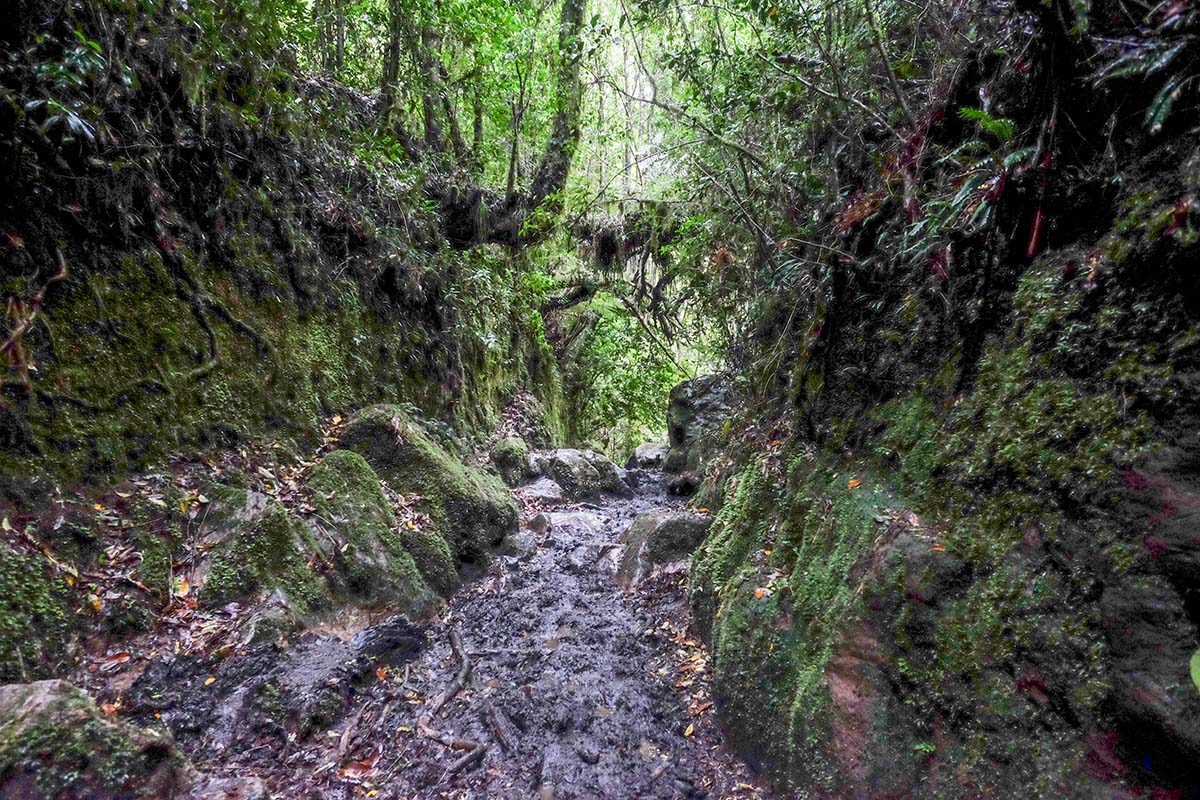
Beyond that, bring typical backpacking fare. Sleeping bag, pad, tent, stove, pots/pans, etc. Make sure your tent has a GOOD rain fly. While we’re on the subject of rain, bring sunscreen; when it’s sunny, it’s really sunny. There are bugs, but please don’t bring deet. This whole watershed is clean as a whistle, and should be kept that way. Soaps, lotions, and other potions are all too often jettisoned inadvertently into the water when homo sapien sapien decides to go for a swim, which is bad news for delicate ecosystems such as this. Make sure any soap, sunscreen, or other substance you bring is biodegradable. And don’t forget a few bags to pack out your trash (and any other trash you find).
If you plan to climb, bring an adventure rack. Offset cams are a nice addition to a standard double rack. A #4 and #5 increase your options quite a bit. Two ropes are mandatory to get off most climbs. Bring a nut tool (even if you’re on lead) to clean out gear placements. Buy some of these wire brushes. They are as valuable as anything else on your rack. Extra long slings are de rigueur as pitches tend to wander. Comfy slab climbing shoes are recommended. And if you plan to put up new routes, please remember, always use stainless steel. 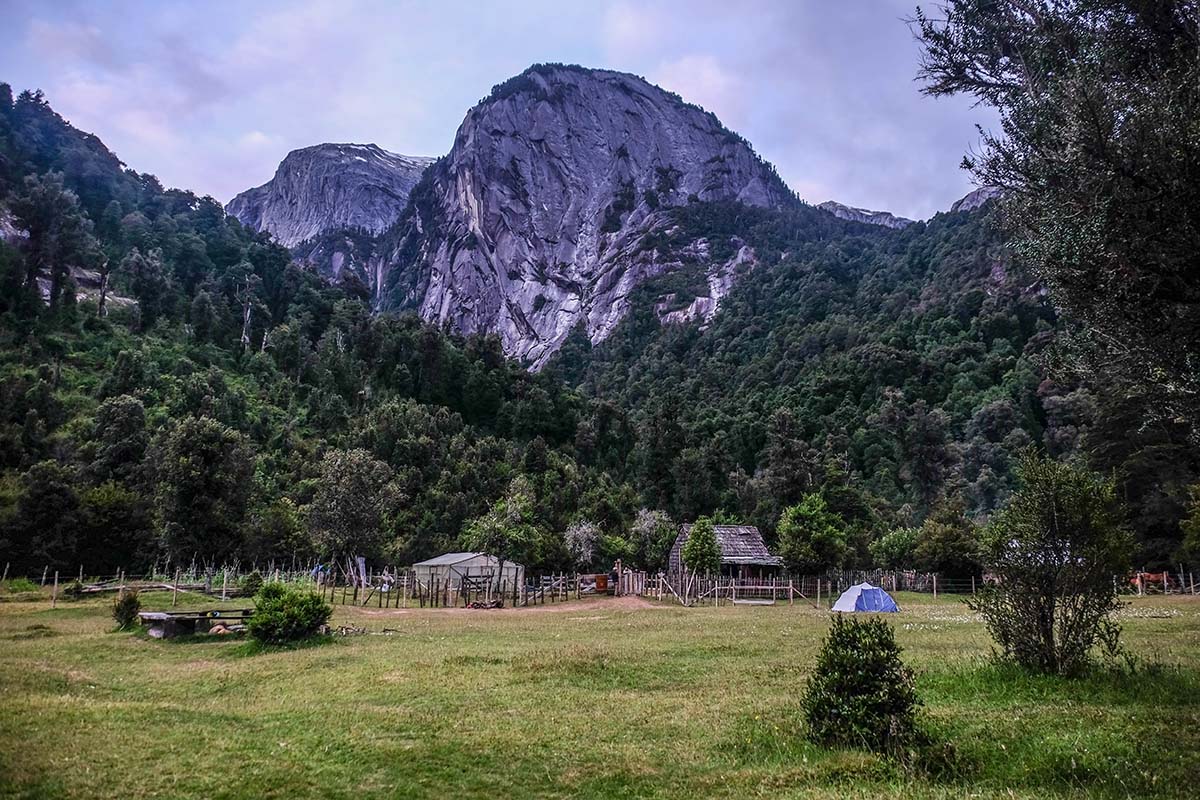
Chris Kalman is a devout climber and writer who lives in Fort Collins, and you can learn more about his work here.